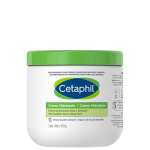Yes, tretinoin expires. Understanding its shelf life and proper storage is crucial for both effectiveness and skin safety. This comprehensive guide covers everything you need to know about tretinoin expiration, from deciphering codes to recognizing spoilage, ensuring you get the most out of your treatment.
Decoding the Expiration Date
Knowing how to find and interpret the expiration date on your tretinoin is the first step to ensuring its efficacy.
Locating the Expiration Date
The expiration date is typically printed directly on the tube or bottle, often on the crimped end or bottom. If you still have the outer box, it should also be printed there. This date signifies the last day the manufacturer guarantees full potency under proper storage conditions.
Deciphering Batch/Lot Numbers
If you can’t find a clear expiration date, look for a batch or lot number. This code helps identify the specific manufacturing batch. While it doesn’t directly tell you the expiration date, it can be used to determine the manufacture date. Contact the manufacturer or your pharmacist; they can usually decipher the code and provide an estimated shelf life.
Understanding Tretinoin’s Shelf Life
Tretinoin’s shelf life varies depending on whether it’s opened or unopened. Proper storage significantly impacts its longevity.
Unopened Tretinoin
An unopened tube or bottle, stored correctly, typically lasts two to three years. However, this is an estimate, and environmental factors can influence the actual shelf life. Storing unopened tretinoin in a cool, dark, and dry place, like a bedroom drawer, is ideal. Refrigeration might offer additional protection, especially in hotter climates, but isn’t strictly necessary unless recommended by the manufacturer.
Opened Tretinoin
Once opened, tretinoin’s shelf life decreases to approximately six to twelve months. Consistent, meticulous storage is essential to maintain its potency during this time. Ensure the cap is tightly sealed after each use to minimize air and moisture exposure, which can degrade the active ingredient. The formulation (gel, cream, micro) may also play a role in how long it remains effective after opening. For example, micronized tretinoin, due to its smaller particle size, might be slightly more stable.
Here’s a quick reference table:
| Tretinoin Status | Expected Shelf Life |
|---|---|
| Unopened | 2-3 Years |
| Opened (Standard) | ~6 Months |
| Opened (Micronized) | Up to 1 Year |
* This assumes proper storage conditions.
Mastering Tretinoin Storage
Proper storage is paramount for preserving tretinoin’s potency. Light, heat, and humidity are its biggest enemies.
Best Practices
- Cool, Dark, and Dry: Store tretinoin in its original packaging in a cool, dark, and dry location away from direct sunlight and humidity. Avoid storing it in the bathroom, where temperature and humidity fluctuate.
- Consistent Temperature: Avoid extreme temperatures, both hot and cold, which can degrade the active ingredient. Aim for a stable room temperature between 68°F and 77°F (20°C and 25°C.)
- Tightly Sealed: Always ensure the cap is tightly closed after each use to minimize air and moisture exposure.
Recognizing Spoiled Tretinoin
Even before the expiration date, changes in color, odor, or texture can indicate that your tretinoin has degraded.
Visual Cues:
- Color Change: Look for any significant shifts in color. Has it darkened, yellowed, or become an unusual shade? This suggests the active ingredient is breaking down.
- Texture Change: Has the texture become grainy, separated, watery, clumpy, or crystallized? Any noticeable change from its original smooth consistency is a red flag.
Other Indicators:
- Off Odor: A rancid, sour, or distinctly “chemical” smell is a clear sign of degradation. Fresh tretinoin usually has a very faint, almost imperceptible scent.
If you observe any of these changes, it’s safest to replace your tretinoin, even if the expiration date hasn’t passed.
Risks of Using Expired Tretinoin
Using expired tretinoin may be ineffective and could potentially irritate your skin.
Reduced Effectiveness:
Expired tretinoin likely has a lower concentration of the active ingredient, reducing its ability to deliver the desired results.
Increased Irritation:
Degraded tretinoin can become more irritating, leading to increased redness, dryness, peeling, or even breakouts.
Potential for Other Reactions:
Some studies suggest that using significantly expired tretinoin might rarely cause other adverse reactions. However, research on the long-term effects of using expired topical medications is ongoing.
Safe Disposal of Expired Tretinoin
Proper disposal of expired tretinoin is important for environmental safety.
Recommended Methods:
- Pharmacy Take-Back Programs: Many pharmacies offer take-back programs for expired medications, providing a safe and convenient disposal method.
- Local Disposal Guidelines: Contact your local waste disposal facility or check your community guidelines for specific instructions on how to safely dispose of medications in your area.
Exploring Alternatives
If you’re concerned about tretinoin’s shelf life, experiencing side effects, or simply want to explore other options, consult a dermatologist.
Other Retinoids:
Several other retinoids are available, each with unique properties and benefits. A dermatologist can help you determine which is best suited for your skin type and concerns.
Alternative Treatments:
Your dermatologist can also recommend alternative treatments for acne, wrinkles, or other skin concerns if retinoids are not suitable for you.
Frequently Asked Questions (FAQ)
- How can I tell if my tretinoin is expired if I don’t have the date? Look for changes in color, texture (graininess, separation, etc.), or a strange odor.
- What could happen if I use expired tretinoin? It’s likely less effective and may cause increased irritation, such as redness, peeling, or breakouts. In rare cases, further adverse reactions could occur.
- How often should I replace my tretinoin? Replace it after the expiration date or if you notice signs of degradation. After opening, aim to use it within 6-12 months.
- What’s the best way to store tretinoin to make it last? Store it tightly sealed in its original container, in a cool, dark, and dry place away from humidity and light. Avoid the bathroom.
By understanding tretinoin expiration and storage, you can ensure its effectiveness and safeguard your skin’s health. Don’t hesitate to contact your dermatologist or pharmacist if you have any questions or concerns. They can offer personalized advice and guidance tailored to your individual needs.
- Doctor Work Life Balance: Proven Strategies for Physician Well-being - November 20, 2025
- Find Your Work-Life Harmony: Quotes for a Fulfilling Life - November 18, 2025
- CRNA Work-Life Balance: Strategies for a Healthier Lifestyle - November 16, 2025
















